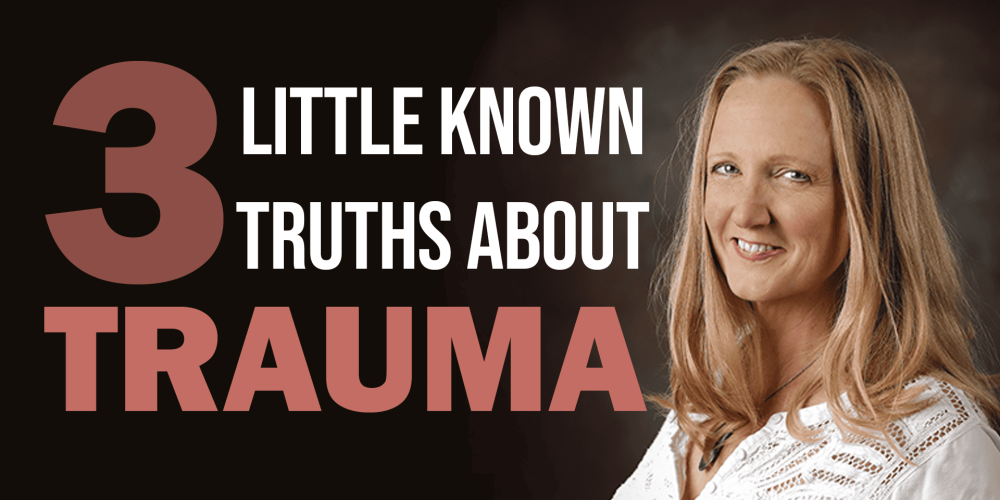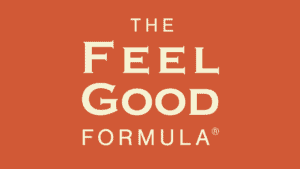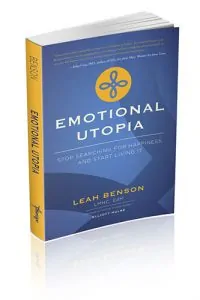Finally master your mental health—without any nonsense “therapy talk”
Trauma Truth #1: Everyone’s talking about trauma, but no one knows what it really is.
Back in the day, “trauma” was a shorthand term that mental health professionals used with each other.
Trauma meant this:
A situation where someone was (or thought they would be) seriously injured or killed, OR witnessed a loved one in that kind of situation. Maybe once, maybe for a prolonged period of time.
Post-traumatic stress meant this:
Someone was experiencing the bodily sensations and memories of those very specific, acute, past experiences—but now, in the present.
Nowadays, the broader population has started throwing around language like:
- Big-T Trauma
- Little-t trauma
- Complex Trauma
- Complex Post-Traumatic Stress
- Trauma Triggers
- “The essence of trauma is disconnection”
This far down the trauma rabbit hole, it’s damn near impossible to know what anybody means when they say “trauma.” When a word takes on whatever meaning that anybody wants, we’re left with a term that’s…pretty meaningless.

If “trauma” confuses you…
Or you’re tired of hearing about it…
Or you’re starting to feel like people say “trauma” in order to control how you act and what you say around them…
You’re not wrong.

So, we’re left with this; if everything is trauma, then nothing is trauma.
If that’s true, we’re left with a problem. If not “trauma,” what descriptor will grant the same level of legitimacy to mental health struggles? What else can folks say to get their suffering taken seriously?
Quite frankly, nothing.
So, trauma it is, for now.
Confession: I’m part of the problem, in terms of how we got here…
Back in 2015, I wrote a blog wherein I explained that it’s traumatic to feel overwhelmed, helpless, and afraid, and to feel that there’s no one who can help you make sense of that experience.
That blog was my way of helping people legitimize their mental health struggles. Some of these difficulties derive from experiences that merit the old-school definition of trauma (think: single dramatic, life-threatening events). Other “trauma” is the very real emotional pain that comes out of the imperfect parent-child relationships and social struggles we all have.
BUT if everything is trauma, then nothing is trauma. So what can we do?
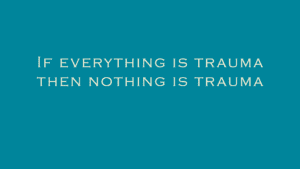
So what can we do?
We can acknowledge that the key to getting out from under “trauma” symptoms is to understand how the brain functions.
We all have a brain, and that brain has one job: to make decisions about how much energy we need in the next moment. Mental health is a direct reflection of how well (or badly) our brain is doing its job.
Unless you understand that, you will forever be tangled in a pretzel of confusion about how to solve your mental health struggles—whether you label those struggles trauma, depression, anger management, addiction, anxiety, or whatever else.
Trauma Truth #2: Trauma can’t be “triggered.”
Why? Well, um, that’s just not how the brain works.
The whole idea that trauma can be triggered is based on a false premise:
That we humans have a reactive, emotional brain…
which is located in a mythical “limbic system”…
which is also known as the mammalian or monkey brain.
This idea goes on to suggest that by practicing self-regulation in emotional moments—and by having a well-functioning “social engagement system” in the brain—we can control that inner beast using our “rational brain.”
According to this false premise, the rational brain is supposedly located in our prefrontal cortex, where it forms part of the more recently evolved neocortex, which is ostensibly unique to humans.
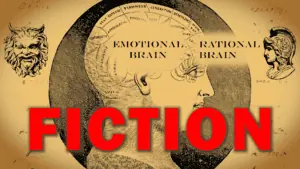
Now, forget those last two paragraphs. I said what I said—throw ‘em out with the garbage! All those ideas are mere fictions. Let’s break it all down.
Let’s break it all down.
Your brain doesn’t react. Your brain constructs.
Translation: Your brain prepares you for the reality of your next moment before you get there, all outside of your conscious awareness.
Brains work predictively, meaning they make guesses based on past experience about the best actions to take in the next moment, all dependent on the context you’re in.
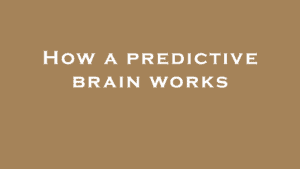
It goes a little something like this:
That allegedly reactive, “emotional” part of your brain? Here’s what it actually does: It predictively generates a range of possible choices for your next action(s), based on past experience, the context you’re in right now, and the energy status of your body at this moment. This happens millions of times, every single moment, spanning countless possible choices.
That supposedly “emotional” part of your brain is doing this 24/7, whether or not you think you’re feeling at all emotional. Normal brain functioning includes neurons firing constantly to prepare you for your next actions, before you get to the next moment—every single moment of every single day.
As it generates choices for your next action(s), that alleged home of “rational control” in your brain is actually optimizing and selecting. Based on past experience (because that’s all it has to work with), it picks actions it thinks will best meet your goals out of all the choices that were generated.
Then, in exactly the same way as it predicted and chose your next actions, the brain changes its firing patterns to generate the next thoughts you’ll consciously think, and the next stimuli you’ll see, hear, and feel around you. These predictions might match up with what’s actually out there, or they might not.
This may sound like just another convoluted metaphor, but I’m not kidding. This is actually how it all works.

Let’s go back to that moment when you feel like you’ve been triggered. What your brain actually did was bring the “trauma trigger” or “emotional trigger” with you to this present moment—before what you consciously identified as “the trigger” ever “went off.”
It’s because of past experiences that your brain carries the “trigger” with you into every moment that you experience.
It’s not because some “emotion circuit” in your emotional brain was activated by something in the world around you.
We don’t react. Our brains prepare us energetically for the next moment.
Part of that preparation is the brain creating your reality in your head before it actually appears around you. Your perception is that things are just happening around you and you react to them, but that’s not what’s going on at all.
(Side note: To dive deeper into the neuroscience behind all this, I would highly recommend the book How Emotions Are Made.)
Trauma Truth #3: You’re not some helpless victim of your trauma.
In fact, you have way more control over your trauma-induced mental anguish than you’ve been led to believe.
As you now know, you don’t need to wrest control from your misbehaving reactive brain.
Instead, you can deliberately build the one mental health superpower that gives you something close to perfect control.
Before we get there, we have to revisit the whole concept of self-regulation that I mentioned earlier.
Self-regulation sounds like exactly what we need to do to get ourselves under emotional control in a moment where we’ve totally lost it.
Unfortunately, self-regulation kind of falls apart as a useful concept when you remember that there’s neither a rational brain nor an emotional brain.
Self-regulation, in the sense that it’s currently understood, is just a metaphor that’s not at all based on how our brains and bodies really work.
Why should this matter to you?
Why should this matter to you?
Let’s say you ascribe to the fiction of a rational/emotionally-reactive brain.
If you can’t make yourself “self-regulate,” you’re mentally ill.
If you don’t want to “self-regulate,” you’re morally bankrupt. (Or, as a client of mine once said, “You’re a loser.”)
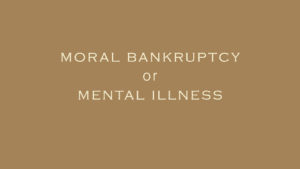
The truth is, neither of those have to be true.
The scientific reality of brain function (i.e. how your emotions are created) always leads to an objective, rational, logical, completely-solvable answer about why you did what you did—and how you can do things differently going forward.
That objective will always circle back around to something I like to call “simple energy function.”
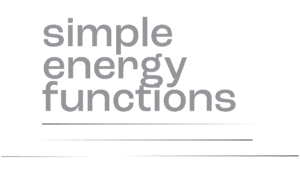
Energy function is at the heart of why we have brains to begin with. Believe it or not, energy function is the driver of all our behaviors.
Hypothetical Scenario #1
You hear or see something that “triggers” you into a blind rage. All of a sudden, you’re so intensely furious that you don’t know where you are, or what’s going on. You’re like some robot or animal, snarling and yelling and flailing and generally making everyone around you steer clear.
Why are you acting like this? At some point in your life, you got the idea that those behaviors would achieve some goal in the most energetically-efficient manner possible.
Maybe those behaviors conveyed the message that you aren’t to be messed with. Maybe letting people know you’re “a little crazy” had some kind of indirect value for you.
You may not remember a time when those behaviors worked for you, or you saw them work for someone else, but your brain sure does. Brains can only pick from actions and/or ideas that they’ve experienced or seen before, in some way, shape, or form.
Hypothetical Scenario #2
You often feel “triggered” into a state of fear, anxiety, or panic. This happens because, based on past experience, your brain expects that doing so will achieve some goal that you have or had.
That goal might have been something like:
- Getting someone to stop doing or saying something
- Escaping from a situation that felt harmful, unsafe, or otherwise threatening
- Getting someone to approach you and soothe you
In both of the cases above, I bet you’ll agree that the actions don’t seem to be at all well-regulated or rational. From your brain’s perspective, though, such choices make perfect sense. Your brain took all of your past experiences and learning and came up with what would best regulate your energy in that moment.
How to build your superpower: proactive self-regulation

Because of the way our brains work, self-regulation can only be a proactive process.
Self-regulation only works before you arrive at an emotional moment. It’s not something you can do during an emotional moment.
When you’re deliberate about altering how you manage your energy, you’ll be able to get yourself out from under any mental-health struggle.
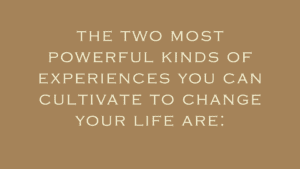
The 2 strategies that will change your life are:
- Learning new ways to categorize sensations in your body
- Practicing new ways to build, hold, and express energy in your body
The next time you encounter a high-energy situation, you won’t be locked into understanding your energy as simply “enraged”, “anxious,” or “unable to control myself.”
By simply acknowledging that you have an enormous amount of energy in your body at that moment, you can decide to recategorize it as energy your brain has provided you—no more and no less.
It’s called deconstructing your emotions, and anyone can do it.

It might not be easy to do at first. But with practice, you can begin to show your brain new experiences of high energy over which you have total control.
Then, when you find yourself in a seemingly out-of-control emotional situation, you actually will have past experience that allows your brain to recategorize your high energy levels into something completely controllable.
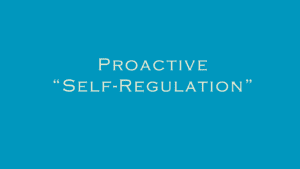
Let’s be clear: This is not “self-regulation” in the rational-brain-defeating-the-emotional-brain sense.
Rather, before you arrived at that moment, you consciously and consistently provided your brain with alternative options for understanding excess energy in your body.
If you build that experience and knowledge purposefully, you’ll exist in every moment with “rational” behavior choices already installed in your brain to guide your actions.
Pretty cool, eh?
Now, you might be wondering what some of those experiences might be.
There’s a whole tradition of “bioenergetic exercise” that arose out of a body-based therapy called bioenergetic analysis.
Many of these exercises can be found in The Feel Good Formula®, a systematic program for building the ability to self-regulate—before you actually need to self-regulate.
If you’re interested in getting a handle on your “trauma”—or any other mental struggle you have—you need options. The Feel Good Formula® will give you options.
Working the course will give you alternatives for making sense of your body’s energy status in any given moment.
You’ll then be armed with many more choices to guide your actions and thoughts in all the future moments of your life.
You’ll have the secret superpower of proactive self-regulation. You’ll finally stop choosing the options that create more problems than solutions.

That’s it, my friends: 3 truths about trauma that most therapists don’t even know.
These truths will help you master your mental-health symptoms and get you out from under mental anguish, faster than any other tool or trick can.
Want to see if this will work for you? Call me, we’ll talk.


